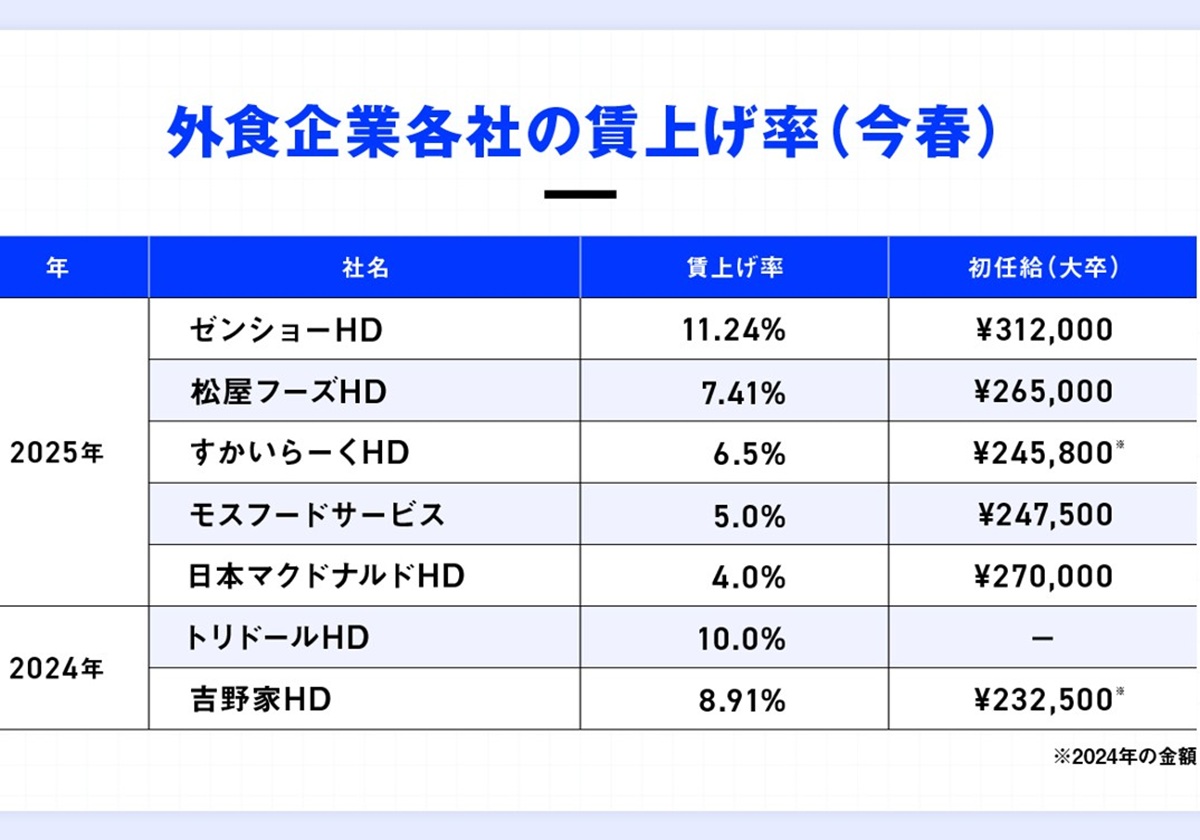Why it matters :
The increasing wage disparity between younger and older generations is a growing concern in Japan.
While younger workers, especially new graduates, are experiencing significant salary hikes, middle-aged and older employees are not seeing the same improvements in their wages. This widening gap between age groups is causing tension and highlighting the challenges of maintaining fair compensation structures across different life stages.
The situation also raises questions about the sustainability of such disparities and the impact on social equity.
Key Points :
Rising wages for young people: Starting wages are rising, and salary is becoming an important factor in job hunting.
Widening generational gap: While wages are rising for younger workers, wages are stagnant for middle-aged and older workers, widening the gap.
Improved compensation in each industry: The restaurant industry, for example, is improving its compensation, strengthening its ability to recruit young workers. The restaurant industry, for example, is improving its compensation, strengthening its ability to recruit young workers.
Summary :
The report describes the current situation in which wage increases among young people are accelerating, while intergenerational disparities are becoming more apparent. In particular, the report emphasizes that starting salaries for new graduates have increased and that salary has become a major factor in the choices young people make when looking for a job.
Companies are raising starting salaries in order to attract talented young employees, and examples include Sumitomo Life Insurance and Nojima. Sumitomo Life Insurance raised the starting salary for new college graduates entering the company in 2026 to 290,000 yen per month, or 335,000 yen including about 20 hours of fixed overtime pay. Wage increases are also underway in the restaurant industry, with Zensho HD and Sukairaku HD providing examples of large wage increases.
On the other hand, wages for middle-aged and older workers have not been raised, and the wage gap with younger workers is widening. This has made the generational gap increasingly problematic.
Furthermore, wages and benefits are improving in each industry, and the image of long hours and low wages is improving in the restaurant industry. The food service industry is considered an attractive industry in that treatment is improving to secure talented people, and wages and positions are easily increased if one is competent.
Overall, while companies are improving the treatment of younger workers through wage increases, at the same time, the wage gap with middle-aged and older workers and differences in treatment by industry are also being highlighted.
Timeline :
- 2025
Mar 20, 2:00 PMMiddle-aged and Older Workers to Suffer the Rage of Starting Salary Increases – Asahi Shimbun - 2025
Mar 19, 9:00 PMVideo] Company with Starting Salary of 300,000 yen / Surprising Benefits – LIFE IS MONEY ~Let’s Look at the World Through the Eyes of Money~ Tuesday, March 18 – Net also on Tele-Telegram - 2025
Mar 19, 6:01 PMSukiya and its management company pay starting wages of 310,000 yen… Is “low wages in the restaurant industry” a thing of the past? Wage Increase – Business Journal - 2025
Mar 19, 3:48 PMENEOS raises wages 8.2% to record high, starting salary at 311,000 yen – Nihon Keizai Shimbun - 2025
Mar 19, 1:41 PMTakeda to Pay 300,000 Yen Starting Salary to University Graduates Joining the Company in April 2013 – Nihon Keizai Shimbun - 2025
Mar 19, 1:06 PMGunma Bank to Pay 280,000 yen Starting Salary to University Graduates Starting in April 2014 – Nikkei - 2025
Mar 19, 9:40 AMCompanies Increasing Hiring of New Graduates Declines for Second Consecutive Year; More Than 50% of Companies Raise Starting Salaries – HRN, the Japan Human Resources News - 2025
Mar 19, 2:00 AMBEYOND, Starting Salary at 430,000 yen for Ph.D. graduates, highest level in VC – Nikkei - 2025
Mar 17, 7:46 PMSeibu HD Raises Starting Salary for College Graduates to 320,000 yen to Secure Talent – Nihon Keizai Shimbun - 2025
Mar 17, 7:16 PMMarui Group Raises Starting Salary to 315,000 Yen, Up 12.7% – Nikkei - 2025
Mar 14, 4:57 PMHokuriku Electric Power to Bear Bears for Second Consecutive Year; Starting Salary Exceeds Demand – Nihon Keizai Shimbun - 2025
Mar 14, 11:56 AMStarting salary 120,000 yen” “Job offers rescinded”… How to support the “unrewarded” generation in the “ice age” of employment? The young generation is seriously affected… [news23] – TBS NEWS DIG Powered by JNN - 2025
Mar 14, 10:22 AMSan-in Godo Bank Raises Starting Salary for University Graduates for Third Consecutive Year to 270,000 yen – nhk.or.jp - 2025
Mar 13, 4:41 PMTokyu Corporation raises wages 8.5%, record high; starting wages for college graduates exceed those of JR East – Nihon Keizai Shimbun - 2025
Mar 12, 4:00 PMNitori raises starting salary to 330,000 yen, 5.51% increase for career-track workers – Nihon Keizai Shimbun - 2025
Mar 11, 4:00 PMUniversity students’ job-hunting activities in full swing, with major companies offering starting salaries of 300,000 yen or more – nhk.or.jp - 2025
Mar 7, 5:00 PMMetropolitan Police Department Starting Salary for University Graduates to be Raised to Over 300,000 Yen in Spring 2026, Aiming to Strengthen Recruitment – nhk.or.jp - 2025
Mar 6, 5:00 PMZensho, Operator of Sukiya, Raises Wages 11.24% Starting Salary to 312,000 Yen, Highest Level in Food Service – Nihon Keizai Shimbun - 2025
Feb 27, 5:00 PMWave of “300,000 yen” Starting Salary Hikes to Secure Talented Employees…Treatment of Senior Employees Also an Issue, “Although I Believe It Will Not Be Reversed” – Yomiuri Shimbun Online - 2025
Feb 27, 5:00 PMStarting salaries in the 300,000 yen range one after another, a trend that is spreading to secure talented human resources…Fears that reversal of treatment with existing employees will weaken “motivation” – Yomiuri Shimbun Online























Comments